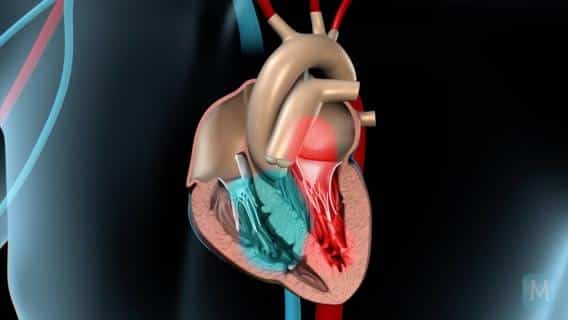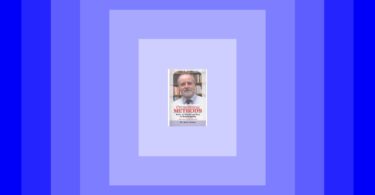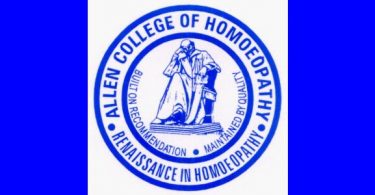- The four principal structural or organic diseases of the heart are: (1) Hypertrophy, (2) Dilatation, (3) Atrophy, and (4) Fatty heart.
Hypertrophy of the Heart
- This is an enlargement of the walls of the heart. Three forms are recognized: (I) Simple hypertrophy where the muscular walls are thickened while the cavities remain of normal size (2) eccentric hypertrophy where the walls are thickened and the cavities are dilated (3) concentric hypertrophy in which the walls are thickened while the cavities are diminished in size. This form is always congenital. The left ventricle is the one most frequently enlarged.
- The diagnostic symptoms are: Increased area of dullness downward, and sometimes also to the left, very forcible beating of the heart, constant sounds dull and loud.
- The causes of this structural disease of the heart are many.
It may be congenital. Rheumatism, with valvular insufficiency and stenosis, is a frequent cause. Overwork while young, athletic feats, early and constant excitement, typhoid fever, overwork (where the respiration is impeded, as in carpenters, blacksmiths), emphysema, Bright’s disease, and certain drugs like tobacco, may be exciting causes.
- The usual course of hypertrophy, if not arrested, is to produce dilatation, also valvular disease, arterial degeneration, fatty degeneration of the heart and apoplexy.
- The management of a case of hypertrophy should include a control of diet and habits, compel a quiet life, avoiding stimulants, excitement and tobacco. Enjoy plenty of sleep after a light supper. The exciting cause should be removed if possible. Select the remedy to meet all the conditions and to cover all of the symptoms.
- The remedies to be thought of are: Arnica in a traumatic athletic case; Kalmia if the hypertrophy is markedly left ventricular; Plumbum if general and eccentric; Arsenicum, Lycopodium, Naja or Spigelia may be called for as well as other remedies. If the hypertrophy is a sequence of disease of some remote organ the selection of the remedy must be affected thereby. See for further information Heart Therapeutics.
Dilatation of the Heart
- In dilatation of the heart the walls become thin. A marked area of dullness is detected, especially to the left.
- The causes of dilatation of the heart enumerated are: Debility following wasting disease, valvular lesions, impaired heart nutrition, destruction beginning in organs remote from the heart, and severe disease in those who suffer with hyper trophy. The chief cause is hypertrophy.
- The diagnostic signs are increased area of dullness, especially to the left. The heart sounds are never loud but may be clear, especially on excitement. When dilatation reaches the stage to produce valvular insufficiency, then we may have dyspnoea, cough, dyspepsia, scanty urine, dropsy, with a feeble, irregular pulse. When the right heart is involved an impulse may be noted below the sternal cartilage.
- Dilatation may be complicated with fatty degeneration. Hypertrophy of one ventricle wall may exist with dilatation of the other cavity giving rise to irregular contraction. Atheromatous arteries exist as a complication in many cases.
- The remedies that may be helpful are the same as those mentioned under hypertrophy, weak heart and fatty heart.
Aconite may be called for. Cactus may be indicated. Nux vomica may be needed. Gelsemium, dilatation of the left ventricle. Tartar emetic, dilatation of the right ventricle with asthma. Digitalis, Cuprum, Muriatic acid, Hydrocyanic acid, Hydrastis and other remedies should be consulted. See Heart Therapeutics for indications.
Atrophy of the Heart
- In atrophy the heart is smaller than normal. The walls are thin but the cavities may be of normal size.
- This condition may be congenital or it may be caused by pressure from pericardial effusion, pericardial adhesions, and marasmus.
- The diagnostic signs are few, the area of dullness is diminished, the sounds are distinct and regular but not loud. The pulse is usually regular but feeble and quick.
- In the treatment of atrophy of the heart, proper food and exercise should be insisted on so that the weakened muscle may be developed. If there exists pericardial effusion it must be removed (see hydropericardium). The remedies are usually the nutritious ones unless the local symptoms point out differently. Arsenicum would be indicated where effusion and the other symptoms suggest it; Phosphorus, if the result of fatty degeneration; Sulphur, if complicated with hydrothorax; China, if the digestive symptoms correspond; Ferrum may be indicated or Nux. The general condition and symptoms must decide in the selection of these or some other remedy.
Fatty Heart
- The pathology of fatty heart includes, (1) a deposit of fat about the heart muscle, (2) where the muscle fibre is displaced by fat.
- The principal diagnostic symptoms are few. — Feeble irregular heartbeat, exhaustion and dyspnoea on exertion, pulse slow, 30-40 when at rest while the heart may be 50-60. Attacks of apoplectic syncope, at first more like syncope, then becoming apoplectic. In the earlier stages those symptoms may not be so prominent as to direct attention to the heart.
- The prognosis is always grave, although life may be prolonged many years. In fatty infiltration it is less grave than in fatty degeneration of the muscular fibers.
- In the management of these cases the best judgment must be exercised in the selection of nourishing diet and pure air. A quiet life, light occupation, the avoidance of all violent efforts, physical or mental, and regular exercise should be insisted on, in a mild climate. Malt liquors are to be avoided.
- Select carefully the indicated remedy and give it time to do its work. The selection may lie between Phytolacca, Nux vomica, Belladonna, Ipecac, China, Arsenicum, Kali, Phosphorus, Hydrastis, Crataegus, or some other remedy. See Heart Therapeutics.




